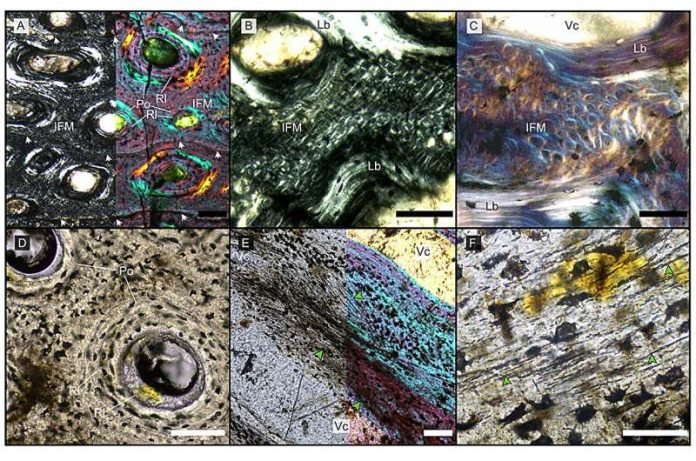
For many years, scientists have been puzzled by large, ancient bone fragments found across Western and Central Europe.
These bones, first discovered in the 19th century, sparked a long-standing debate about the creatures they once belonged to.
Recently, a study from the University of Bonn has provided answers that could end this debate for good.
The research shows that these bones likely came from the lower jaw of an enormous sea creature known as an ichthyosaur, which could grow as large as 25 to 30 meters in length, rivaling the size of today’s blue whales.
The story of these mysterious bones began in 1850 when Samuel Stutchbury, a British naturalist, documented the discovery of a large, cylindrical bone fragment at Aust Cliff near Bristol.
Since then, similar bones have been unearthed in various parts of Europe, including North Rhine-Westphalia, Germany, and the Provence region in France.
More than 200 million years ago, these regions were covered by a vast ocean, and the sediments from that time have preserved a variety of marine and coastal fossils.
Initially, some thought these bones belonged to extinct, crocodile-like land animals or even to unknown dinosaur species. However, as early as the 20th century, some scientists began to suspect that these fragments might belong to giant ichthyosaurs instead.
Marcello Perillo, a young researcher at the University of Bonn, took on the task of solving this mystery. By examining the microstructure of the fossilized bone tissue, Perillo discovered a unique pattern not seen in other animal fossils.
The bones contained long strands of mineralized collagen arranged in a distinct manner. This pattern matched that of large ichthyosaur fossils found in Canada, suggesting a strong likelihood that the European fragments also belonged to ichthyosaurs.
The ichthyosaur was a massive sea creature that lived around 250 million years ago, with some species growing as large as modern whales. These creatures were among the ocean’s dominant predators until they vanished over 200 million years ago.
The bone structure of these ichthyosaurs, similar to carbon fiber-reinforced materials, likely provided the stability needed to support their enormous size and rapid growth.
The discovery sheds light not only on the identity of the mysterious bones but also on the life of these ancient giants.
The structure of their jaws suggests they could have endured significant forces while feeding, and some speculate they might have used their snouts to ram into prey, much like orcas do today. However, without complete fossil remains, many aspects of their existence remain speculative.
This research marks a significant step in understanding the prehistoric inhabitants of our planet’s oceans and closes a chapter on a long-standing scientific debate.
The findings not only highlight the importance of detailed scientific analysis in uncovering the past but also remind us of the incredible diversity and scale of life that has existed on Earth.
The research findings can be found in Peer J.
Copyright © 2024 Knowridge Science Report. All rights reserved.




